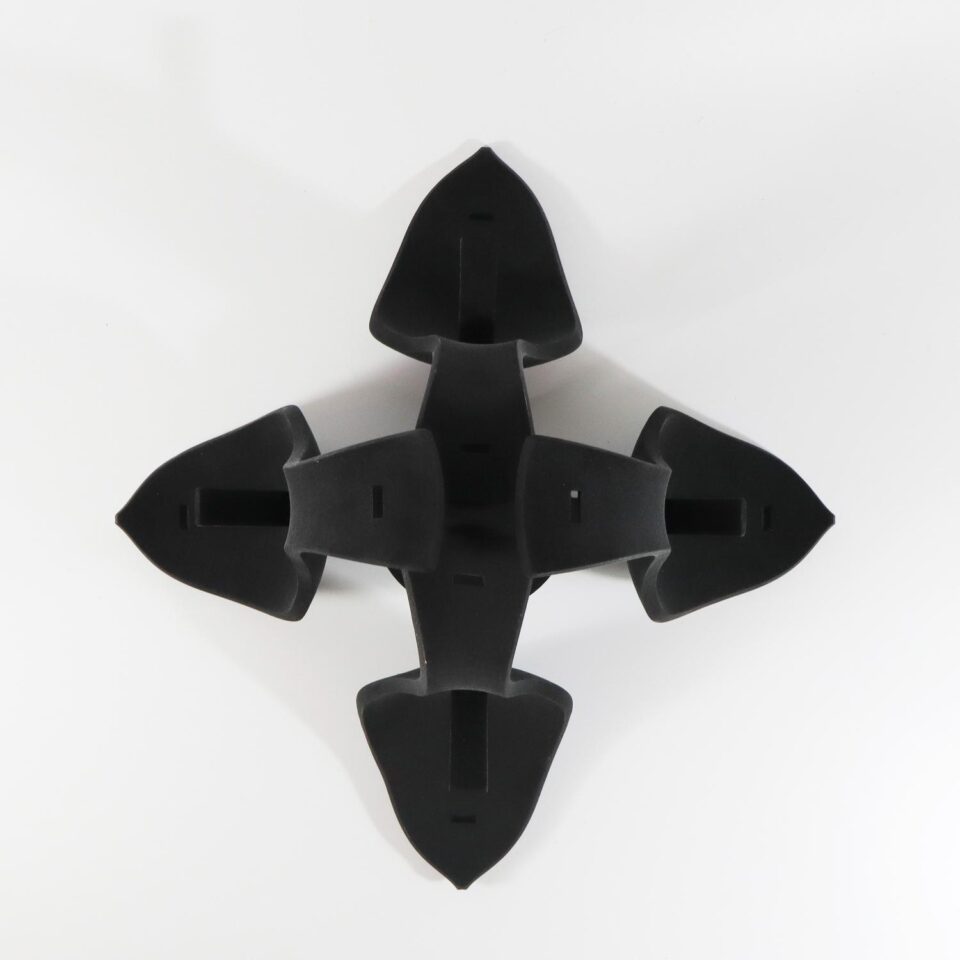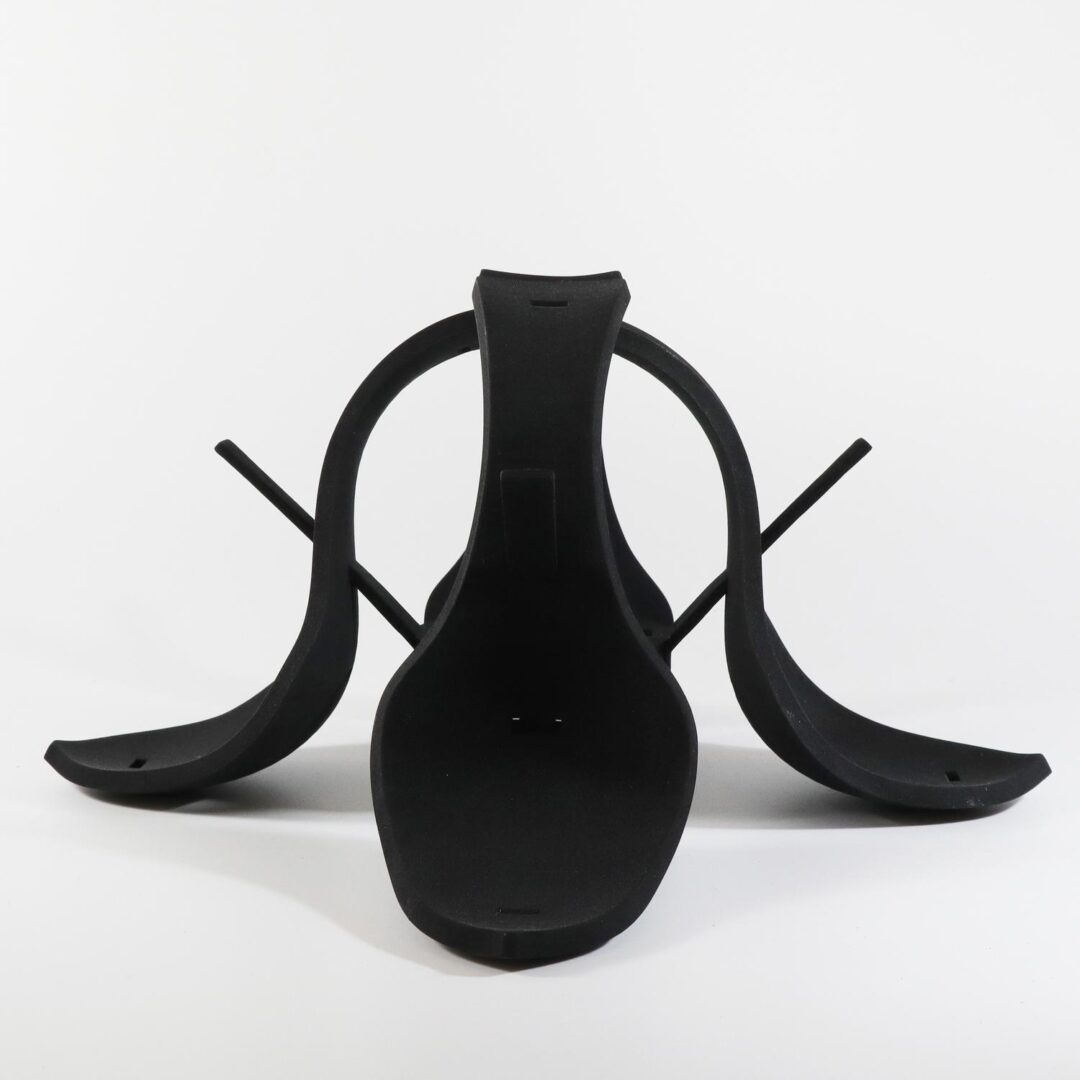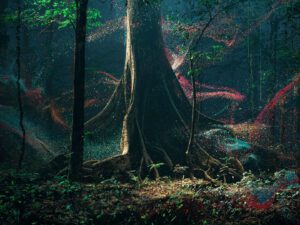Shoes are integral to the human story. The oldest-known pair of sandals, recovered from Oregon’s Fort Rock Cave in 1938, dates back over 10,000 years. Since then, other ancient examples have been found in Armenia, Scandinavia and Spain. These are, and were, objects of huge personal and historical significance. Jump forward to today, however, and footwear has become a multi-billion-dollar industry led by huge demand and fleeting fast fashion trends. The question: has footwear lost its cultural meaning?
The art world seems to say: not so much. In the mid-to-late 20th century, Andy Warhol was using shoes to speak about pop culture and consumerism. More recently, Joana Vasconcelos has become known for constructing towering silver high-heels – like Marilyn (2009) – from steel pans and lids, to deconstruct stereotypes around women. Other artists have used shoes to connect with people: Chiharu Shiota filled the Smithsonian with old pairs in 2014, after reaching out to the public to amass nearly 400 individual shoes, accompanied by personal notes, for the Over the Continents project. Moreover, the traditional line between “fashion” and “fine art” has been slowly disappearing. In 2010, Alexander McQueen’s collection Plato’s Atlantis expanded perceptions of what a shoe could be – seemingly defying physics with its “armadillo” boots. Since then, we’ve seen artists like Takashi Murakami, otherwise known for sculptures, installations and works-on-canvas, launch footwear collections. Shoes are a metaphor for our times.

This is where Nian Liu comes in, and artist and cultural innovator working at the borderlines of design and sculpture. Nian is dedicated to preserving traditional shoemaking techniques, whilst experimenting with new technologies like 3D printing. For Nian, it’s “not merely about footwear” – these futuristic sculptures are deeply rooted in cultural heritage. The Ceramic Sole (瓷履) collection is one such example, inspired by Chinese 花盆底 (flowerpot bottom) footwear. Designs within the series take notes from other classical sources: patterns on ancient imperial dragon robes, known as “water’s edge” (shuijiao); the classic wan shou (longevity) pattern, symbolising a gathering of auspicious blessings; Su Shi’s renowned verse from Huichong’s Spring River Evening Scene, as well as traditional Chinese su brocade, embroidery and gemstone inlay techniques. Nian intricately combines various ceramic techniques such as slip casting, moulding and engraving to construct each piece. The results are delicate and tactile, with deliberate imperfections and evidence of damage that “speak to the fragile nature of cultural preservation.”

Nian is dedicated to offering a dialogue between past and present, and to keeping traditions alive. As such, the artist also incorporates objects from other cultural contexts into her footwear, like dream catchers, astrology charts and Ouija boards. Ritual Footwear: The Objects of Magick is inspired by various tools of introspection and meditation, and each piece can be dismantled, reassembled, packaged and personalised in different ways. Here, Nian shows dedication to merging the field of shoemaking with other disciplines: laser cutting, jewellery making, wood engraving and more. In so doing, she joins a wave of contemporary artists who are working towards a more joined-up view of the creative industries, seeing footwear not simply as a practical – or even disposable – object, but as an enduring symbol of cultural and personal identity. Nian’s practice is an exciting glimpse of what truly multi-disciplinary design looks like.
Words: Eleanor Sutherland
All images courtesy Nian Liu, from Ritual Footwear: The Objects Of the Magick.





